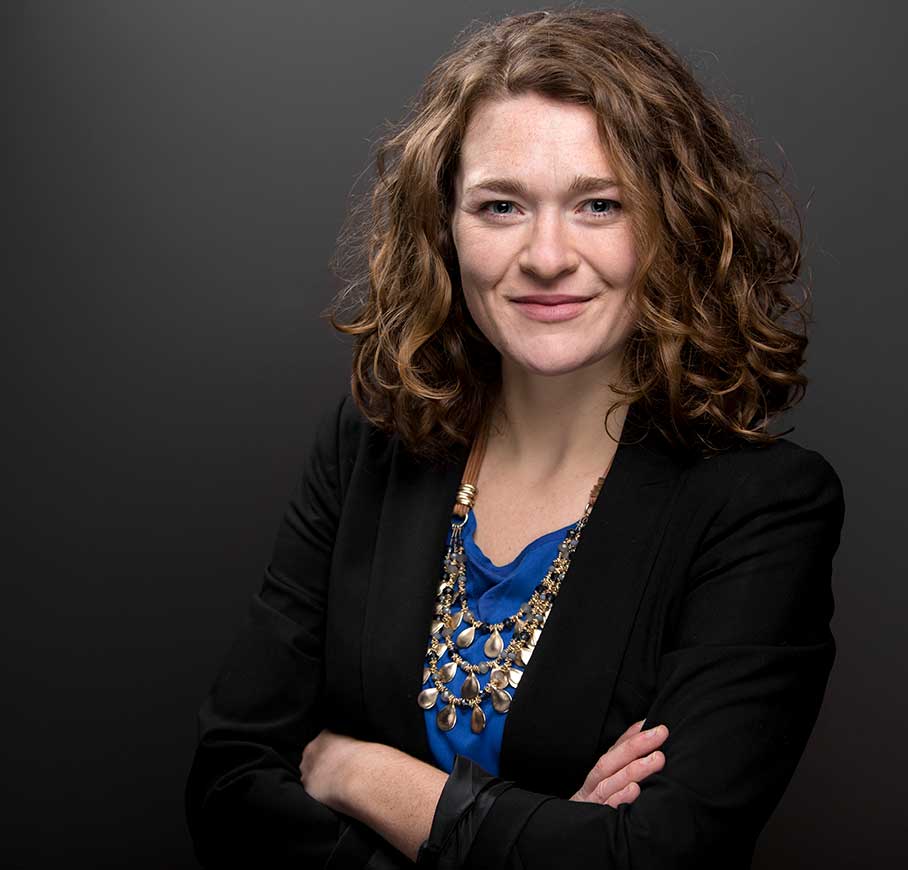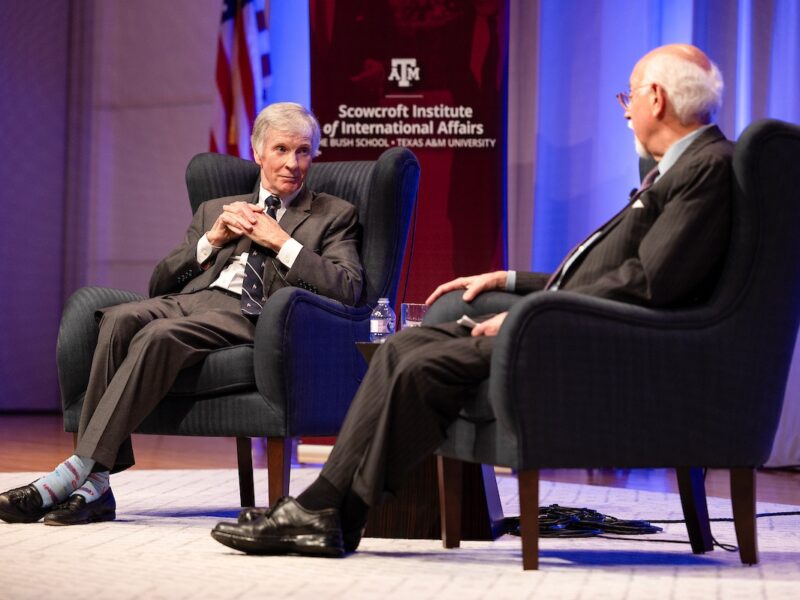Texas A&M Study Shows Republicans, Democrats Prefer Gender Balanced Decision-Making
Where are the women? Citizens have more faith in their government institutions when both women and men are involved in decision-making, according to a study conducted by Diana Z. O’Brien, associate professor of political science at Texas A&M University and her co-investigators, Amanda Clayton of Vanderbilt University and Jennifer M. Piscopo of Occidental College.
Their findings were published in the American Journal of Political Science in September and showed that, without exception, men and women, both Republican and Democrat, prefer decision-making bodies comprised equally of men and women.
“Generally, for citizens to feel good about their democratic institutions, for them to be more likely to engage, more likely to do what the government wants and needs them to do, like pay taxes and follow laws, to have that sort of citizen engagement and sense of trust, institutions need to be inclusive,” O’Brien said.
Yet, with women accounting for approximately 20 percent of the U.S. Congress and 25 percent of state legislators, the nation likely is decades away from achieving the gender parity in government that would make this scenario possible, O’Brien said.
“We’re seeing a bipartisan push for inclusivity, but it’s going to take time to reach 40 to 50 percent women in government,” she said. “In the meantime, political leaders can try to help more women officeholders onto high-profile committees where the power is located in state and national governments, and the President can appoint women as advisers and cabinet members.”
An experiment with gender parity in politics
In their new study, O’Brien and her peers surveyed men and women about different versions of a hypothetical newspaper article. The story featured an eight-member legislative committee making decisions about sexual harassment policies, but depending on the version, the composition of the committee was either all male or gender-balanced, and the outcome either advanced or rolled back rights for women.
The respondents answered questions about their attitudes towards the decision-making process, their trust in the institution and individuals making the decisions, their perceptions of the legitimacy of the decisions and their willingness to accept the decisions.
Gender balance inspires more confidence in the decision-makers, the institutions they represent and their conclusions. This is especially true when citizens, especially men, perceive that decisions roll back rights for women. The findings also can apply to those making decisions in the business sector and their affected employees, O’Brien said.
Women in politics: A matter of supply and demand
Achieving gender parity to inspire more confidence among citizens in their political institutions faces two key challenges: generating the supply of women aspirants and candidates for office, and creating demand that more women participate in the political process.
The general state of rearing daughters must change to supply more women with the confidence and desire to pursue political office, O’Brien said. Currently, from birth, daughters are not mentored or socialized as much as sons for political office and other positions of leadership and power. Parents simply do not encourage political ambitions among their daughters as much as they do their sons.
When men and women are equally qualified, the women are much less likely than the men to believe they are qualified to hold the office. In fact, despite the fact that men value qualifications less than women do, men are more likely to assert that they are better for the job even when women are objectively more qualified.
“I love teaching at Texas A&M because we have all these women cadets who are building great credentials, and when they graduate, they will have a strong Aggie network, especially in Texas,” O’Brien said. “So I am trying to get them to start thinking now about running for office because they would make super candidates for either party — that’s my mission.”
Another hurdle is that women are more avoidant than men of getting involved in politics because of their dissatisfaction with the American campaign process, particularly raising money, knocking on doors and surrendering their privacy.
As for demand, women receive much less encouragement from political party activists, elected officials, non-profit activists, friends, and spouses or partners to run for political office than men do. When women are actually encouraged, they are just as likely as men to seek political office.
“It’s a big challenge, but every person who cares about this can help right now,” O’Brien said. “They can find the smart women in their lives, tell them they are qualified and encourage them to run for office, even if it’s at the local level.”
Citizens reject “manels”
While criticizing “manels,” a term used in social media to describe all-male panels, is a relatively new development, decision-making bodies comprised exclusively of men are not a new concern. For example, the all-male Senate judiciary committee responsible for questioning Anita Hill during the 1991 confirmation hearings for Clarence Thomas and the line of questioning that ensued elicited strong reactions at the time.
In fact, O’Brien believes more women than ever before sought and won national political office the next year, at least in part, because of their outrage at those confirmation hearings. Called the “Year of the Woman,” 1992 ushered in the largest number of women, 24, ever elected to the U.S. House of Representatives in any single election and triple the total number of women in the U.S. Senate.
“People were really put off that there was not a single woman on that senate judiciary committee who might have related to those types of experiences in the workplace, and the outrage lasted for a long time,” O’Brien said. “We started to see more and more frustration with having groups of men, even when they were well-intentioned, talk about women without women present.”
More recently, other examples of all-male governing bodies motivated O’Brien and her co-investigators to launch their study in 2016.
That same year, PayPal in the United Kingdom convened an all-male committee of senior executives to discuss gender equality in the workplace, and the media mocked them mercilessly, O’Brien said.
In 2017, President Donald Trump announced his intention to reinstate the global gag rule banning foreign nongovernmental organizations that receive American aid from counseling health clients about abortion or advocating for abortion law liberalization. This is customary when Republicans take office.
The difference, in this case, was that the image released by the White House featured President Trump signing the executive order surrounded by a group of men, which triggered further frustration among some women.
#MeToo movement stops short of politics
O’Brien and her peers began their study years before the #MeToo movement began sweeping the nation. The movement mainly informed women that instances of harassment in their workplaces, which they likely believed were isolated, were actually systemic and part of broader cultural attitudes towards women, O’Brien said.
“It’s moved from the idea that there’s this jerk in my workplace to there’s a culture of protecting jerks and silencing both men and women who encounter them,” she said. “And those women, and some men, are feeling more empowered and encouraged to engage more.”
While workplace environments in Hollywood and the business sector have improved, the movement has stopped short of changing the culture of sexual harassment in some political institutions.
“It’s fascinating that the politicians are willing to legislate on sexual harassment in other workplaces but not their own,” O’Brien said. “All the evidence, including a few high-profile cases in Congress and much off-the-record talking, suggests that harassment is prevalent among politicians and their staffers.”
In the U.S. Congress, women on both sides of the aisle are pushing to address sexual harassment but their efforts are stalling out, and this is another scenario likely to improve when more women are present, she said.
Media contacts:
- Diana O’Brien, 979-845-8235, dzobrien@tamu.edu
- Elena Watts, 979-458-8412, elenaw@tamu.edu





